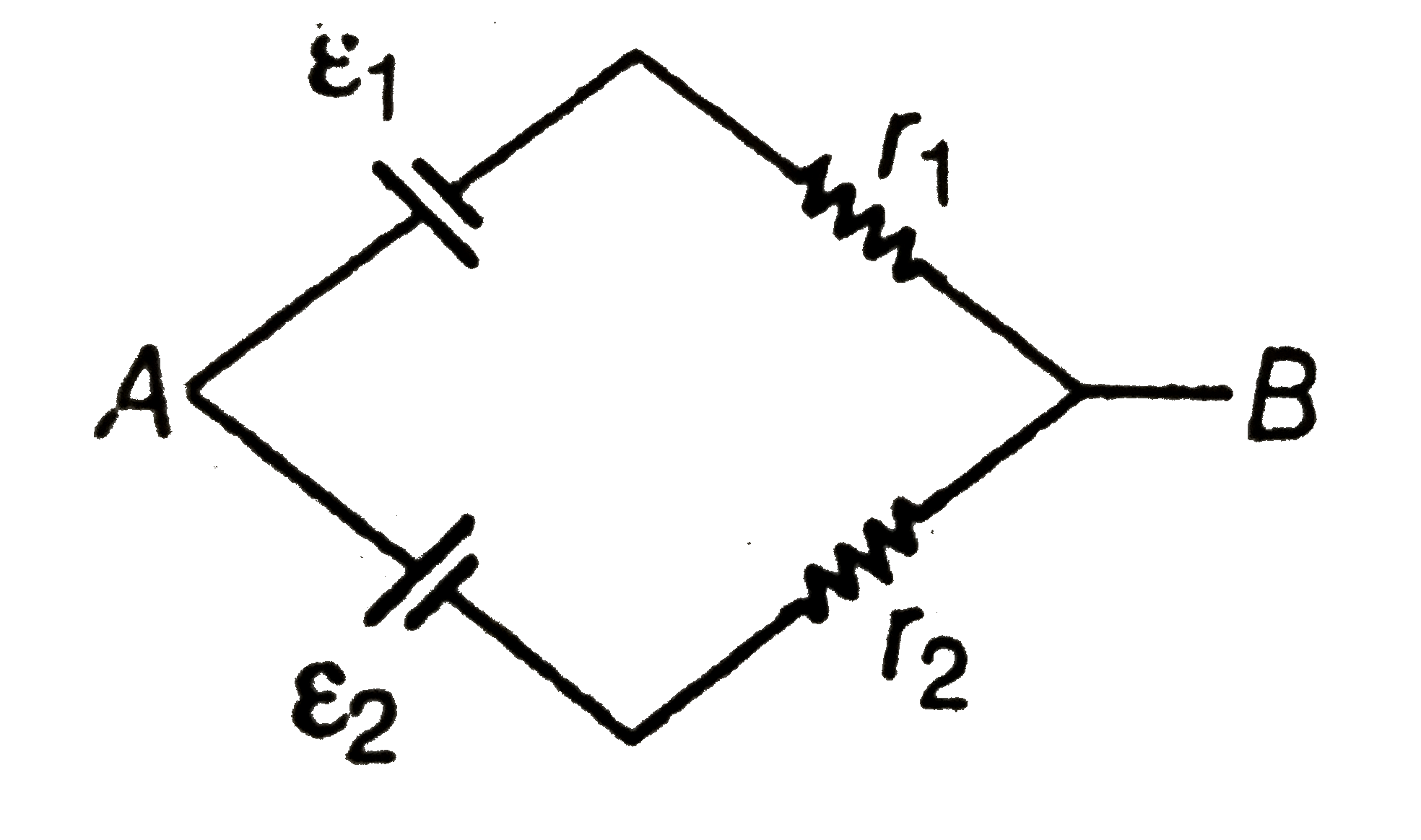Two tungsten lamps with resistances R1andR2, respectively , are connected first in parallel and then in series in a lighting circuit of negligible internal resistance. Given R1>R2.
(a) Which lamp will glow more brightly when they are connected in parallel ?
(b) If the lamps of resistance R1 now burns out, how will the net illumination produced change ?
(c ) Which lamp will glow more brightly when they are connected in series ?
(d) If the lamp of resistance R2 now burns out and lamp R1 alone is plugged in , will the net illumination increase or decrease ?
(a) When the lamps are connected in parallel , potential difference V across each lamp will be the same and will be equal to potential difference necessary for full brightness of each bulb. As P=V2/R, illumination produced by the second bulb , i.e, the bulb having lower resistance will shine more brightly.
(b) When R1 burns out, power is dissipated in R2 only. Because internal resistance is quite low in lighting circuit , potential difference is still equal to V, hence power is dissipated in the second lamp, i.e,
V2R2<(V2R1+V2R2) , net power consumed initially.
In other words , net illumination will now decrease.
(c) When two lamps are connected in series , the potential difference across each lamp will be different , but current I flowing through each lamp will be the same , as P=I2R.
Hence , illlumination produced by the first lamp will be higher as compared to that produced by the second lamp , i.e, the lamp having higher resistance will glow more brightly.
(d) When lamp of resistance R2 burns out and only lamp of resistance R1 is connected in the circuit will change. Let new current be (i').
Because potential difference still remains the same ( due to low internal resistance),
i'R1=i(R1+R2)ori'=[(R1+R2)]/R1
If P' is the power consumed , then
P'=i2R1=[i2(R1+R2)(R1+R2)]/R1
When both the lamps were present , then total power consumed was given by
Ps=P1+p2=i2(R1+R2), i.e, illumination gets increased when one bulb is used.
Topper's Solved these Questions
- HEATING EFFECT OF CURRENTBOOK - CENGAGE PHYSICS ENGLISHCHAPTER - HEATING EFFECT OF CURRENTEXERCISE - Subjective
8 Videos
- HEATING EFFECT OF CURRENTBOOK - CENGAGE PHYSICS ENGLISHCHAPTER - HEATING EFFECT OF CURRENTEXERCISE - Single Correct
60 Videos
- HEATING EFFECT OF CURRENTBOOK - CENGAGE PHYSICS ENGLISHCHAPTER - HEATING EFFECT OF CURRENTEXERCISE - Solved Examples
13 Videos
- GEOMETRICAL OPTICSBOOK - CENGAGE PHYSICS ENGLISHCHAPTER - GEOMETRICAL OPTICSEXERCISE - Integer Type
4 Videos
- INDUCTANCEBOOK - CENGAGE PHYSICS ENGLISHCHAPTER - INDUCTANCEEXERCISE - Concept Based
8 Videos
Similar Questions
Knowledge Check
In the shown in the given figure, the resistances R1andR2 are respectively
 A14Ωand40ΩB40Ωand44ΩC40Ωand30ΩD14Ωand30Ω
A14Ωand40ΩB40Ωand44ΩC40Ωand30ΩD14Ωand30Ω
Two resistors of resistance R1 and R2 having R1>R2 are connected in parallel. For equivalent resistance R, the correct statement is
View SolutionTwo cells of emfs ε1andε2 and internal resistances r1andr2 respectively are connected in parallel . Obtain expressions for the equivalent (i) resistance and , (ii) emf of the combination.
View SolutionTwo resistor of resistance R1=(6±0.09)Ω and R2=(3±0.09)Ω are connected in parallel the equivalent resistance R with error (in Ω)
View Solution
Two batteries of emf ε1andε2(ε2>ε1) and internal resistance r1andr2 respectively are connected in parallel as shown in figure.
View SolutionAn ammeter and a voltmeter of resistance R connected in seires to an electric cell of negligible internal resistance. Their readings are A and V respecitvely. If another resistance R is connected in parallel with the voltmeter
View SolutionAn ammeter and a voltmeter of resistance R connected in seires to an electric cell of negligible internal resistance. Their readings are A and V respecitvely. If another resistance R is connected in parallel with the voltmeter
View SolutionResistance R,2R,4R,8R ...... ∞ are connected in parallel. What is their resutlant resistance will be
View Solution

